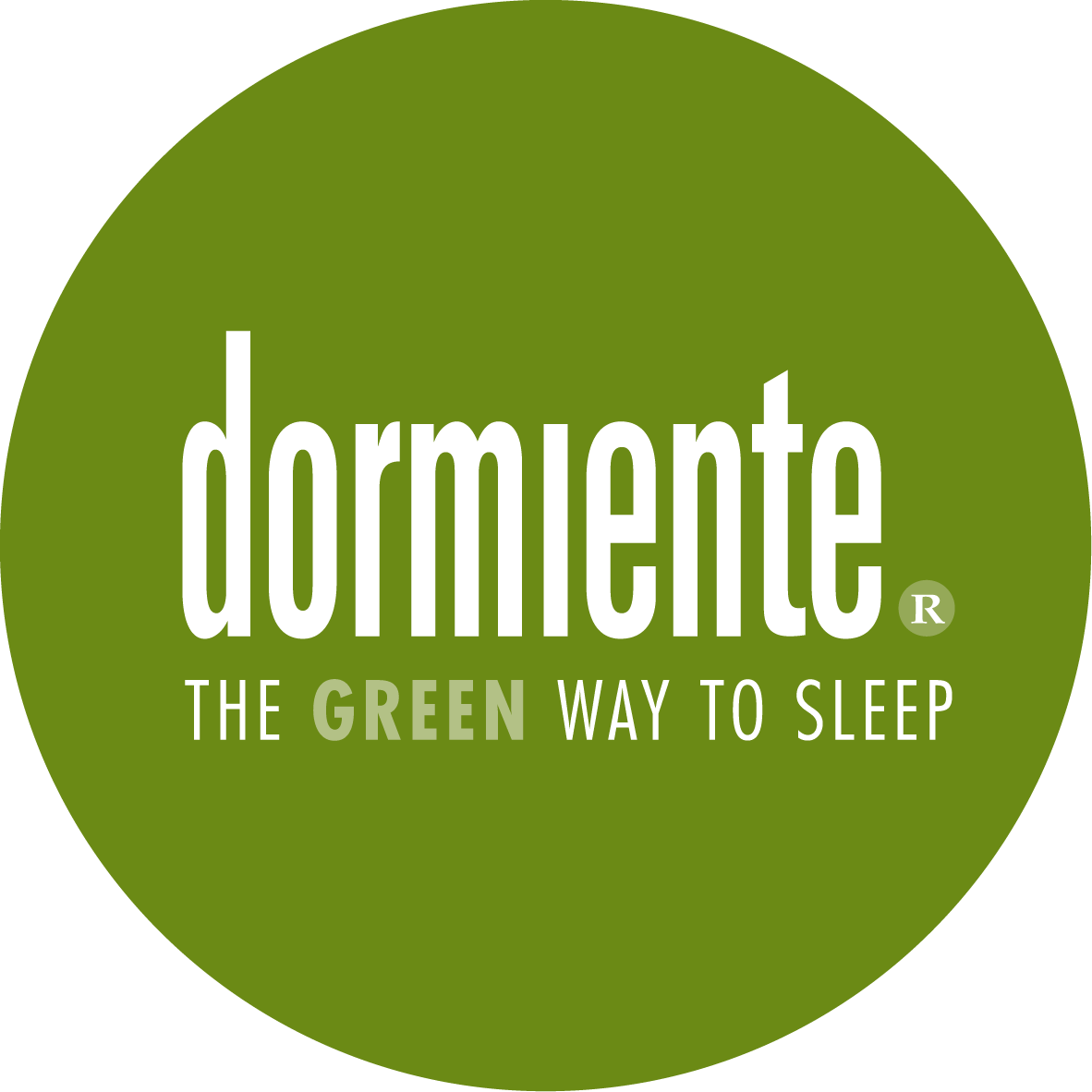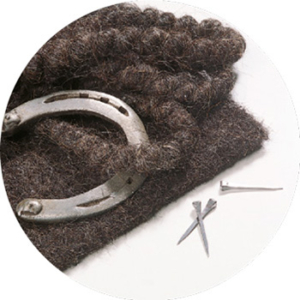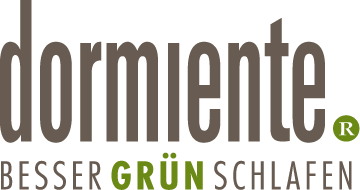Horsehair in Natural latex mattresses
Origin of the product
The majority of our horsehair and tail hair is imported by sea from South America from countries such as Paraguay, Uruguay, Brazil or Argentina. The manes are imported via the Trans Siberian Railway from Mongolia. We produce horsehair and tail hair according to regulation RAL 399C4 for upholstery materials.
Production and processing
The raw material is washed in its country of origin for 2 hours at 120 ° C. Once in Eberbach the hair is washed again in specially designed machines. Afterwards it is twisted into a rope in the spinning frame. Following this process the hairs are treated with water steam at 120 ° C in order to disinfect them and to enhance their curliness. Then the hairs are dried in a special drying chamber for about 90 minutes at 100 ° C. From there they are passed on to the various different processing departments. The corkscrew like structure of the hair gives horsehair its elasticity and means it can keep its shape well.
Composition of the horsehair
Our horsehair, made according to the RAL 399C upholstery filling materials regulation, consists of at least 20% tail hair in addition to horsehair and mane hair combing waste. The rope is approx. ½ to ¾ inches thick and has approx. 60 coils per metre.
Specific characteristics
One special feature of horsehair is its hygroscopic nature. This means that horsehair is able to absorb up to 25% of its own weight in moisture without feeling wet. night during sleep when our bodies release moisture this moisture can be absorbed by the mattress. During the day, when the bed is aired, the moisture is released easily. Especially in the summer when the temperature is high, a comfortable and dry micro-climate in the bed can thus be achieved.
Composition of the tail hair
Our tail hair consists of 100% pure tail hair. Production and processing is identical to the horsehair, so is the thickness of the rope and the coils per metre. Strand thickness and turns are identical.
Treatment of the horsehair and tail hair
Bei der Herstellung werden keine Chemikalien verwendet und es sind auch keine erforderlich. only water resp. water steam is applied. As the raw material is imported from overseas we regularly have it tested for chemical residues by Schloss Hohenstein (Öko-Tex Standard 100) and the Eco-Umweltlabor in Cologne (QUL-Quality Standards).



